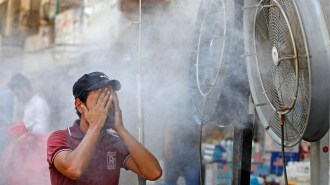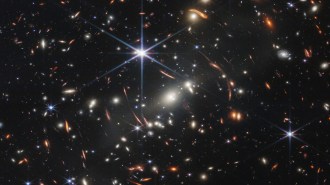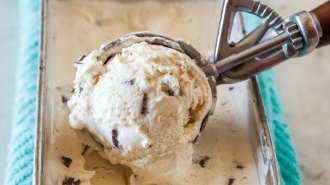Search Results
Flying football physics
Students will answer questions about the online Science News article “Spiraling footballs wobble at one of two specific frequencies,” which describes how researchers figured out why spiraling footballs sometimes drift sideways. A version of the article, “Why spiraling footballs sometimes miss the mark,” appears in the September 10, 2022 issue of Science News.
Solving sports problems with science
Get your students exploring the scientific method by applying scientific problem-solving to their favorite sport. Learning outcomes: Scientific method.
Extraordinary scientists are ordinary people
Help your students connect and relate to current scientists from diverse backgrounds with this activity. Students will then find articles about ongoing science research that links the work of the scientists to real-world questions. Learning outcomes: Basic collaboration and listening skills; ability to use a computer with internet access

How Much Heat Can We Handle?
Summers are getting hotter. Use this guide to help students explore the science of heat and its effects on the body, and then apply what they learn through diagramming.
Spread the word
In this quick activity, students will create a social media post to raise awareness of a public health issue. They will consider how to craft an engaging message that communicates the issue while also appealing to the public.
Too hot to handle
Heat waves are becoming more frequent around the globe, and scientists are studying humans’ ability to endure the extra heat. Get students thinking about what it means to handle heat and explore basic thermodynamic concepts through diagramming. Learning Outcomes: Diagramming
Feeling the heat
Students will answer questions about the Science News article “Humans may not be able to handle as much heat as scientists thought,” which explores the effects of extreme heat on the body and what that means for us as heat waves intensify around the globe. A version of the article, “How much heat can we handle?” appears in the August 27, 2022 issue of Science News.

Postcards From a New Space Telescope
Have you heard about the James Webb Space Telescope’s stunning first images of deep space? Use this guide to help students explore the science behind pictures of exploding stars, dancing galaxies, cosmic cliffs and more, and discuss how images can be thought of as data.
Pushing the boundaries of outer space
Students will answer questions about the Science News article “Here are the James Webb Space Telescope’s stunning first pictures,” which highlights dazzling cosmic wonders seen in farthest and clearest views yet of deep space. A version of the article, “Postcards from a new space telescope,” appears in the August 13, 2022 issue of Science News.
New space images dazzle with data
Share a universal celebration in science with images of deep space from the James Webb Space Telescope. Have students collaborate to think about the science shown in the images and the implications of images as data.
Learning Outcomes: Observe, interpret and compare data in images; explore universal questions about science.
Exploring materials
After reading a journalistic article about materials science and engineering over the last century, students will discuss and research why and how new materials are developed and how they transform society. Student groups will develop museum-style exhibits to communicate what they learned to the rest of the class.

Cellulose Helps Ice Cream Go Down Smooth
In this guide, students will learn about how food scientists are using chemistry to improve the texture of ice cream, discuss the science of ice cream on a molecular level and brainstorm testable scientific questions about favorite frozen desserts.